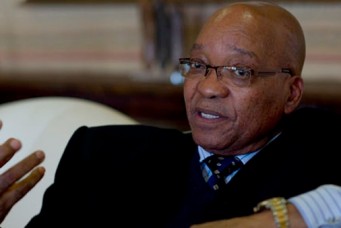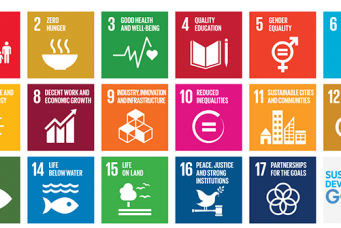After Apartheid
The struggle for wealth and power in the new South Africa
After Apartheid: Reinventing South Africa? Edited by Ian Shapiro and Kahreen Tebeau. University of Virginia Press, 2011. 368 pp.
The twentieth century brought a kind of independence to all the African colonies. South Africa was the particularly thorny last holdout, because the British Empire handed its authority over to white settlers. That created an intractable political stalemate and a living reminder of the iniquities that Europe had heaped over several hundred years upon the continent’s poor head.
After Apartheid: Reinventing South Africa?, a collection of twelve essays written mostly by South Africans, including academics at leading universities in the country, is a commendable effort to take the measure of South Africa seventeen years after the fall of apartheid. In a key essay entitled “Poverty and Inequality in South Africa, 1994–2007,” Jeremy Seekings is excoriating in his criticism. He lays much of the blame for these ills at the door of the ruling African National Congress. Four successive ANC governments have retained, according to Seekings, both the previous white regime’s emphasis on capital intensive economic growth and its neglect of education for the poor. Thus, he suggests, the ANC, the organization that led the country’s freedom struggle, has paradoxically become doubly complicit in the levels of unemployment and poverty.
Other essays chronicle further failures of the ANC and government. Nicoli Nattrass thoroughly explores—and is ultimately stumped by—former President Thabo Mbeki’s mystifying denial that AIDS is caused by infection with human immunodeficiency virus, or HIV. She partly blames the administrations of other former presidents, F. W. De Klerk and Nelson Mandela, for mistakes in their HIV/AIDS policies. But according to Nattrass, their errors were dwarfed by Mbeki’s failure to acknowledge that there were new and useful treatment and prevention strategies available—particularly antiretroviral drugs for treatment and slowing the spread, especially via mother-to-child transmission. Meanwhile, Lungisile Ntsebeza blames the ANC for cravenness in the face of “organized white commercial farmers and their capitalist allies” and hence the failure of government to redistribute even 5 percent of the land, much less the 30 percent targeted back in 1997.
The broadsides may strike some readers as overly harsh. Certainly, South Africa may not be the ‘rainbow miracle’ depicted by sentimentalists, but it is a stable and functioning constitutional democracy with a bill of rights that measures up to the best in the world. The country has successfully completed four ‘free and fair’ national elections. The national finances are in order and basic levels of services have been delivered to the poorest of the poor. The ANC spent eighty years fighting racial injustice and the apartheid system. To many, its leaders were the embodiment of wisdom and patience. So rebuking them for failing to eradicate poverty, inequality, and unemployment, as well as other faults catalogued here (including disease outbreaks, mediocre education, lack of democratic culture, and the retreat of indigenous African languages) seems a bit like blaming the victim.
One suspects that the tone is a deliberate corrective, and in that sense it should be welcomed. Blaming apartheid for current failures has become a too-familiar defense by ANC governments. When social critics accept this framework—that less should be expected of the ANC or of standards of governance in South Africa—they are reinforcing the offensive idea that Africans are helpless victims of their past and deserve to be measured by lower standards than apply to the rest of the world.
Yet all correctives carry the risk of overstatement. South Africa has indeed been profoundly shaped by the ongoing consequences of colonialism and apartheid. Anthony Butler, in “Black Economic Empowerment: Diverse Hopes and Differentially Fulfilled Aspirations,” describes the objective pressures that put an end to National Party rule and have dogged four successive ANC governments as well. In the process, he identifies the struggle for power and wealth that are defining politics in the new South Africa.
Butler shows how in the aftermath of the 1976 Soweto uprising the apartheid regime stepped up efforts to divert the aspirations of an emerging black business class. Apartheid was failing because it was an attempt to legislate against the collective desires and fears—and ultimately actions—of millions of people. The ‘homeland’ system was collapsing because in spite of coercion and tax breaks, people and businesses refused to migrate to those barren bantustans. They kept coming back, in the face of fines and brute force, to the cities, the bright lights, the markets, the chance of work, and the chance to do business.
Butler describes how the most powerful elements of business, mostly within subsidiaries of the Anglo–American Corporation, established a consultation process with the domestic arm of the liberation movement that emerged after 1976, particularly the United Democratic Front. This process, led by the Consultative Business Movement, in turn laid the groundwork for the post-liberation Black Economic Empowerment (BEE) program. It established the first links between individuals and companies that would be involved in major business deals after the end of the apartheid era.
During the Mandela presidency from 1994–99, BEE focused on moving control of state institutions from the hands of white to black managers. In the private sector, BEE was primarily voluntary and initially focused on ‘employment equity’—ensuring the demographics of all levels of staff moved towards the country’s actual racial demographic profile. But Mandela’s tenure was always more about the symbols of reconciliation and asking those previously divided by apartheid to accept and embrace each other.
Mbeki’s government gave BEE teeth through legislation by making black empowerment a condition in the state tendering process and, to cite another example, by making black participation in ownership and control of mining companies a condition for receiving mineral rights granted by the state. Before long, the use of the state to redirect wealth into black hands assumed an irreversible momentum that sucked in the country’s emerging political class.
Mbeki fought to broaden the group of BEE beneficiaries and to learn from both the Afrikaner and the Malaysian experiences to create a ‘patriotic bourgeoisie’—through the Broad-based Black Economic Empowerment Act of 2003 and various regulations that accompanied it. But, as Butler demonstrates, those attempts to regulate the process were swamped as the ANC’s leaders and members were drawn into the temptations of crony capitalism. Its growth and spread set off a series of crises in the ANC, as some sought to control or stop the process and limit the corroding effects on the ruling party and young democracy.
A pivotal moment in the internal ANC struggle occurred in December 2007 at the ANC’s national conference held in Polokwane, the capital of the Limpopo Province. Jacob Zuma defeated Mbeki in a contest for the ANC leadership. Because of the clear ANC majority in parliament, Mbeki’s defeat in the ruling party led to his recall as head of state and his eventual replacement by Zuma.
Polokwane is best understood both as an attempt to curb the patronage networks controlled by Mbeki’s allies and to derive the benefits from them. It is useful to dwell on this because the alliance of forces that backed Zuma has already collapsed under the weight of the same imperatives that brought down Mbeki’s government. A crisis similar to the one that Mbeki faced is building against Zuma as the ANC prepares for its national conference and centenary to be held in the Free State municipality of Mangaung next year.
In the lead-up to Polokwane, the South African Communist Party and the Congress of South African Trade Unions (COSATU) declared that democracy was under threat from “the 1996 class project” (the SACP’s term for Mbeki’s neo-liberal macroeconomics based on an alliance between what the SACP called “monopoly capital and a comprador bourgeoisie”). In turning to Zuma, they also allied themselves with groups whose only real intent was to wrest patronage networks away from Mbeki’s cronies. This they effectively did.
Several of the other After Apartheid essays capture the contradictory result of Polokwane and hence the inherent flaws of the Zuma presidency. Theuns Eloff, in the essay “Business Community After Apartheid and Beyond,” describes how Polokwane left Zuma seemingly beholden to different political constituencies that he would “have to pay once he became president of the country.” Marianne Camerer, in “Anticorruption Reforms in Democratic South Africa,” correctly bemoans the fact that Polokwane led to the closing down of the Scorpions, South Africa’s most effective anticorruption police unit.
The broad alliance of Zuma supporters that came to power at Polokwane immediately began purging Mbeki backers throughout the party and state, and attempting to unpick business deals that the former president’s key allies had put together over the previous ten years. This promoted the formation of a pro-Mbeki breakaway party called COPE.
That conflict is beginning to pale into insignificance compared to the new rupture inside Zuma’s ruling alliance. South African politics is experiencing a replay of the forces that drove the changing of the guard at Polokwane. The SACP and COSATU, realizing that they might have made a deal with their worst nightmare have coined a new term for the leadership of the ANC Youth League and other previous allies in the fight against Mbeki: ‘tenderpreneurs,’ political and government leaders who get rich out of using influence to capture tenders from the state and private sector.
The SACP laid at the door of its previous allies the charge of “anti-worker, anti-left, anti-communist, pseudo-militant demagogy” that betrayed long-held ANC-alliance traditions of ‘internal organizational democracy.’ Further, the left-wing allies charged these forces with being responsible for the ANC losses in the May municipal elections by having portrayed the whole movement as “anti-constitutionalist and as narrow nationalist chauvinists.” Still bruised from the previous fight against Mbeki’s cronies, a new coalition of left-wing activists and democrats seems to be emerging to again fight this tendency and attempt to reestablish the boundary between the state and private wealth accumulation.
Might a Nelson Mandela or any of the other heroes of the South African liberation movement have traveled a different path? Only if we think that the policy failures are, ultimately, failures of leadership. The attempt to meet or mediate the aspirations of a black property-owning class overwhelmed the last apartheid regime as well as four successive ANC governments.
There is a large underclass trapped in poverty and unemployment and increasingly dissatisfied with government delivery. A raging flood of wealth and power, moving from the old order to the new, has blurred the boundaries between the private and the public and is threatening to overwhelm government and the democratic processes of the ruling party. This flood has also significantly taken government’s attention from the deeper problems of poverty and unemployment.
In the runup to Manguang, a contest of contradictory impulses is playing out within the ANC. It is possible that Zuma’s government, like Mbeki’s three years earlier, will not survive the battles over ideology and power.
In the longer term, there are two possible outcomes to the crisis. One is that establishing a large and establishing a large and stable black class of owners and managers will eventually allow the rules of acquisition and tendering to be reinstated—and the focus of government to return to the challenges of marginalization, unemployment, inequality, and poverty. The other is that failure to share wealth and control will create a wave of discontent in the emerging elite that pushes government down the path of forced nationalization of land, business, and property, and ultimately leads to the looting of the private and the public sectors.
Blaming the government for failure is a duty of social commentators that After Apartheid unflinchingly fulfills. Yet appreciating the conditions, constraints, and limitations the ANC faces—the tide of hundreds of years of history, really—is crucial if we are to understand South Africa’s present and future.




